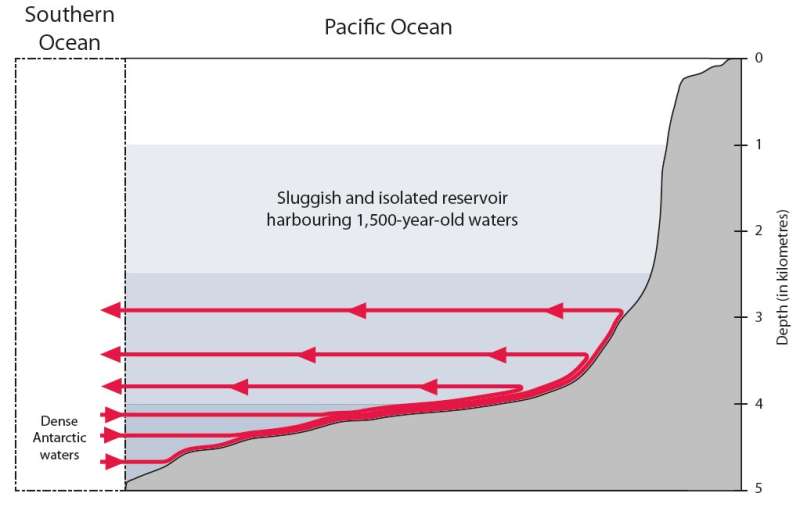How a 'shadow zone' traps the world's oldest ocean water

New research from an international team has revealed why the oldest water in the ocean in the North Pacific has remained trapped in a shadow zone around 2km below the sea surface for over 1000 years.
To put it in context, the last time this water encountered the atmosphere the Goths had just invaded the Western Roman Empire.
The research suggests the time the ancient water spent below the surface is a consequence of the shape of the ocean floor and its impact on vertical circulation.
"Carbon-14 dating had already told us the most ancient water lied in the deep North Pacific. But until now we had struggled to understand why the very oldest waters huddle around the depth of 2km," said lead author from the University of New South Wales, Dr Casimir de Lavergne."What we have found is that at around 2km below the surface of the Indian and Pacific Oceans there is a 'shadow zone' with barely any vertical movement that suspends ocean water in an area for centuries.
The shadow zone is an area of almost stagnant water sitting between the rising currents caused by the rough topography and geothermal heat sources below 2.5km and the shallower wind driven currents closer to the surface.
Before this research, models of deep ocean circulation did not accurately account for the constraint of the ocean floor on bottom waters. Once the researchers precisely factored it in they found the bottom water can not rise above 2.5km below the surface, leaving the region directly above isolated.
While the researchers have unlocked one part of the puzzle their results also have the potential to tell us much more.
"When this isolated shadow zone traps millennia old ocean water it also traps nutrients and carbon which have a direct impact on the capacity of the ocean to modify climate over centennial time scales," said fellow author from Stockholm University, Dr Fabien Roquet.
The article Abyssal ocean overturning shaped by seafloor distribution is published in the scientific journal Nature.
More information: C. de Lavergne et al, Abyssal ocean overturning shaped by seafloor distribution, Nature (2017). DOI: 10.1038/nature24472
Journal information: Nature
Provided by Stockholm University

















